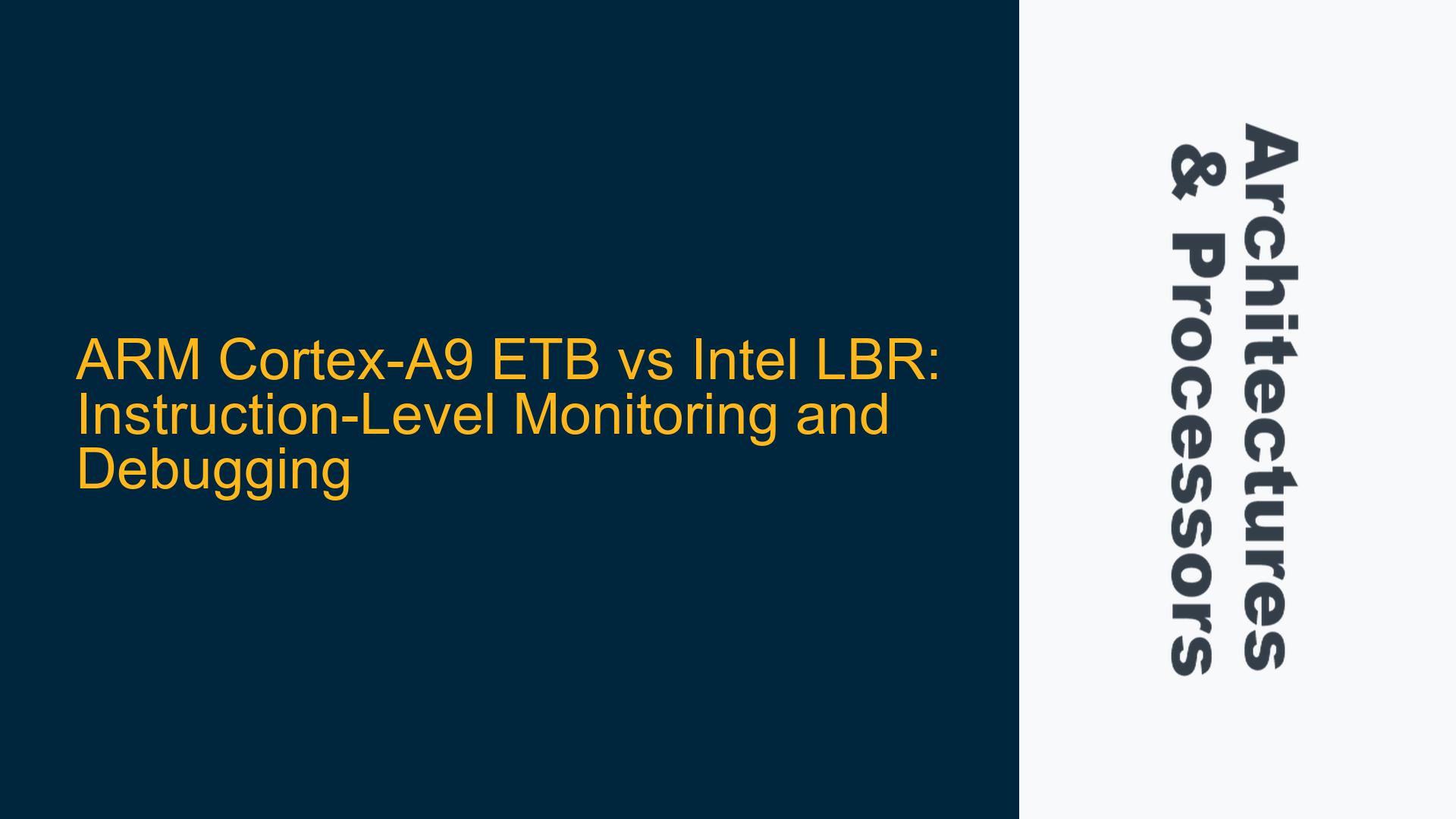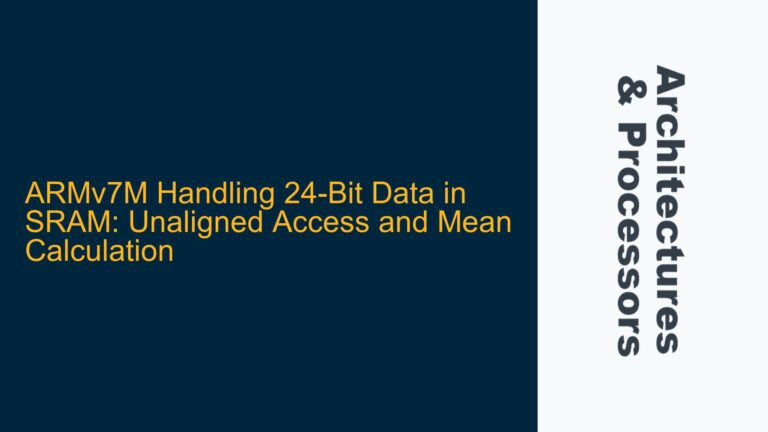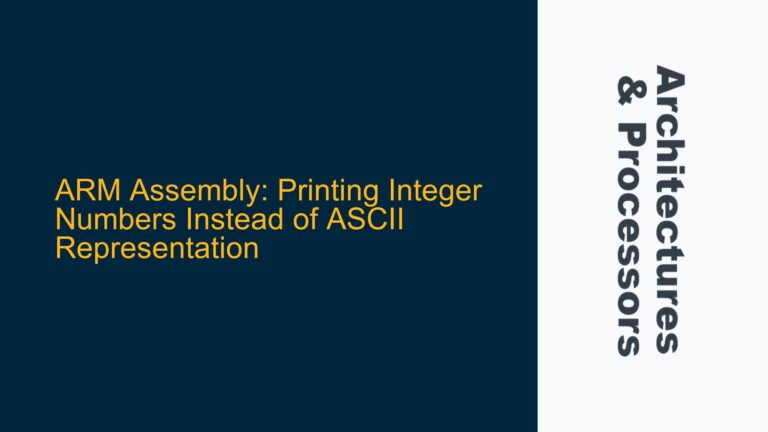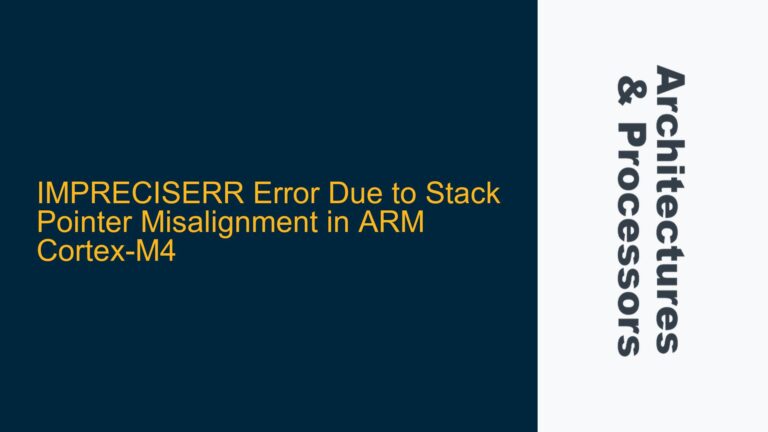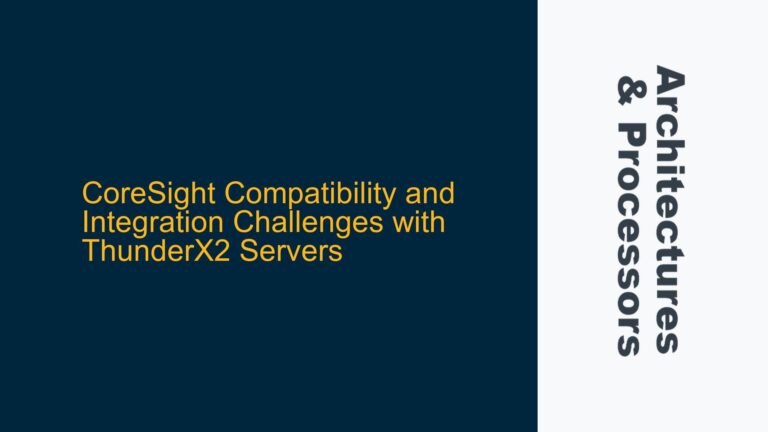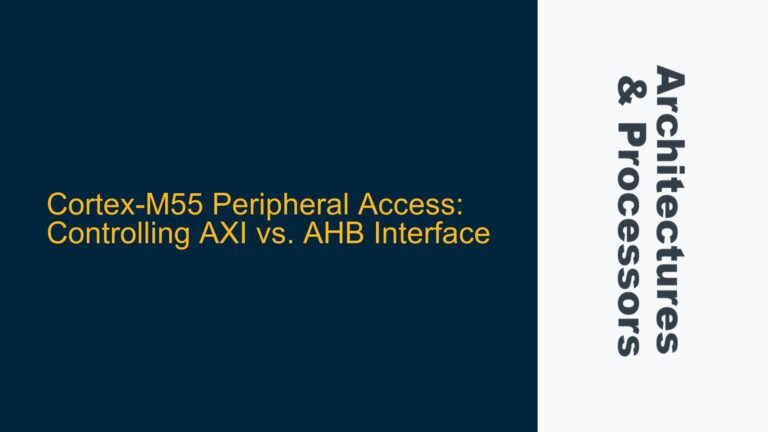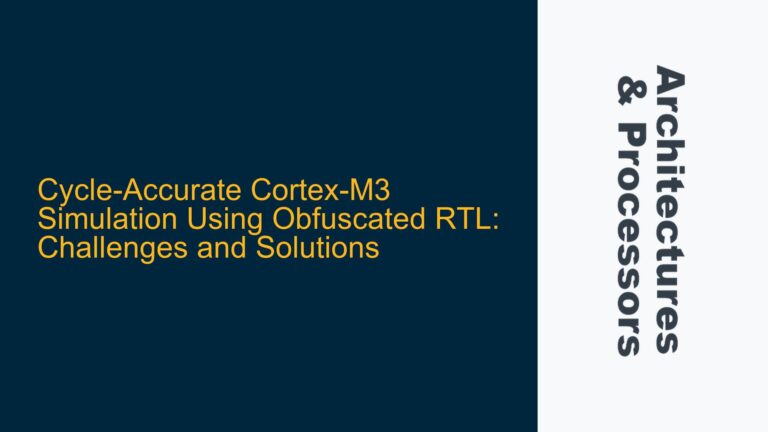ARM Cortex-A9 ETB and Intel LBR: Functional Comparison and Use Cases
The Intel Last Branch Recording (LBR) feature and ARM’s Embedded Trace Buffer (ETB) serve similar purposes in the context of instruction-level monitoring and debugging, but they differ significantly in implementation, capabilities, and overhead. Intel’s LBR is a hardware feature that records the most recent branches taken by the processor, storing them in a set of model-specific registers (MSRs). This allows developers to analyze control flow with minimal overhead, making it ideal for performance profiling and debugging in real-time systems. On the other hand, ARM’s ETB, available in processors like the Cortex-A9, captures branch traces and stores them in an on-chip buffer. While ETB provides detailed trace information, it is not a direct equivalent to LBR, as it focuses on capturing a broader range of trace data rather than just the most recent branches.
The primary use case for Intel LBR is low-overhead performance monitoring, where the goal is to identify bottlenecks or unexpected control flow changes without significantly impacting system performance. ARM’s ETB, however, is more suited for comprehensive debugging and trace analysis, particularly in systems where understanding the full execution flow is critical. The ETB captures not only branches but also other events, such as exceptions and interrupts, providing a more holistic view of system behavior. However, this comes at the cost of higher overhead and increased complexity in trace management.
In terms of hardware integration, Intel LBR is tightly coupled with the processor’s execution pipeline, allowing it to record branches with minimal latency and overhead. ARM’s ETB, while also integrated into the processor, relies on a separate trace infrastructure that includes the Trace Macrocell and Trace Port Interface Unit (TPIU). This separation allows for more flexible trace configurations but introduces additional complexity in terms of setup and data extraction.
For developers transitioning from Intel to ARM architectures, understanding these differences is crucial. While ARM’s ETB can be used to achieve similar goals as Intel LBR, it requires a different approach to configuration and data analysis. The following sections will explore the possible causes of performance and functionality gaps when using ETB for LBR-like tasks and provide detailed troubleshooting steps to optimize its use.
Performance Overhead and Trace Data Management Challenges
One of the most significant challenges when using ARM’s ETB for instruction-level monitoring is the potential performance overhead. Unlike Intel LBR, which is designed to operate with minimal impact on system performance, ETB can introduce substantial overhead due to its comprehensive trace capture capabilities. This overhead arises from several factors, including the volume of trace data generated, the bandwidth required to transfer this data, and the processing power needed to analyze it.
The ETB captures a wide range of trace events, including branches, exceptions, and interrupts. While this provides valuable debugging information, it also results in a large amount of data that must be stored and processed. In systems with limited memory or processing resources, this can lead to performance degradation. Additionally, the ETB’s on-chip buffer has a finite size, meaning that trace data must be periodically offloaded to external storage or memory. This offloading process can further impact system performance, particularly if it occurs during critical execution phases.
Another challenge is the management of trace data. Intel LBR stores branch records in dedicated registers, making them easily accessible for analysis. In contrast, ARM’s ETB stores trace data in a circular buffer, which must be parsed and interpreted to extract meaningful information. This parsing process can be time-consuming and requires specialized tools and expertise. Furthermore, the ETB’s trace data format is complex, requiring developers to have a deep understanding of the trace macrocell and its configuration options.
To mitigate these challenges, developers must carefully configure the ETB to balance trace detail and performance impact. This includes setting appropriate filters to limit the types of events captured, adjusting the buffer size to match available resources, and optimizing the trace data offloading process. Additionally, developers should consider using external trace analysis tools that can efficiently process and visualize ETB data, reducing the burden on the target system.
Optimizing ETB Configuration for LBR-Like Functionality
To achieve LBR-like functionality using ARM’s ETB, developers must focus on optimizing the trace configuration and data management processes. The first step is to configure the ETB to capture only the most relevant trace events. This can be done by setting up event filters that exclude unnecessary data, such as interrupts or exceptions, and focus solely on branch traces. By reducing the volume of trace data, developers can minimize the performance overhead and simplify the analysis process.
Next, developers should optimize the ETB buffer size and offloading strategy. The buffer size should be large enough to capture a meaningful sequence of branch traces but small enough to avoid excessive memory usage. The offloading process should be carefully timed to avoid disrupting critical system operations. One approach is to use periodic offloading, where trace data is transferred to external storage at regular intervals. Another option is to trigger offloading based on specific events, such as the buffer reaching a certain fill level.
To further reduce overhead, developers can leverage ARM’s Trace Memory Controller (TMC) and Trace Port Interface Unit (TPIU). The TMC provides advanced features for managing trace data, including compression and timestamping, which can help reduce the volume of data and improve analysis accuracy. The TPIU, on the other hand, enables the transfer of trace data to external debug tools via high-speed interfaces, such as Serial Wire Output (SWO) or Parallel Trace Interface (PTI).
Finally, developers should use specialized trace analysis tools to interpret ETB data. These tools can automatically parse the trace data, extract branch records, and visualize the control flow. Some tools also provide advanced features, such as statistical analysis and performance profiling, which can help identify bottlenecks and optimize system performance. By combining optimized ETB configuration with powerful analysis tools, developers can achieve LBR-like functionality on ARM processors while minimizing overhead and complexity.
Implementing Data Synchronization and Trace Analysis Techniques
To ensure accurate and reliable trace data, developers must implement proper data synchronization techniques when using ARM’s ETB. This is particularly important in multi-core systems, where trace data from different cores may be interleaved or out of sync. One approach is to use ARM’s Synchronization Points (SYNCP) feature, which inserts synchronization markers into the trace stream. These markers can be used to align trace data from different cores and ensure a consistent view of system behavior.
Another important consideration is the handling of trace data during context switches or power state transitions. In such scenarios, trace data may be lost or corrupted if not properly managed. To address this, developers should configure the ETB to pause tracing during context switches and resume it once the new context is established. Additionally, developers should ensure that trace data is flushed from the buffer before any power state transitions occur.
For effective trace analysis, developers should adopt a structured approach that includes data preprocessing, event correlation, and performance profiling. Data preprocessing involves cleaning and formatting the trace data to remove noise and inconsistencies. Event correlation involves linking trace events to specific code segments or system states, enabling developers to identify patterns and anomalies. Performance profiling involves analyzing the timing and frequency of trace events to identify bottlenecks and optimize system performance.
By implementing these techniques, developers can maximize the value of ARM’s ETB for instruction-level monitoring and debugging. While ETB may not be a direct equivalent to Intel LBR, it offers a powerful and flexible solution for trace analysis on ARM processors. With careful configuration and optimization, developers can achieve LBR-like functionality while leveraging the unique capabilities of ARM’s trace infrastructure.
Conclusion
ARM’s Embedded Trace Buffer (ETB) and Intel’s Last Branch Recording (LBR) serve similar purposes but differ in implementation, capabilities, and overhead. While LBR is optimized for low-overhead performance monitoring, ETB provides comprehensive trace data at the cost of higher complexity and performance impact. By understanding these differences and adopting best practices for ETB configuration and trace analysis, developers can effectively use ARM’s trace infrastructure to achieve LBR-like functionality. This includes optimizing trace filters, managing buffer size and offloading, leveraging advanced trace features, and using specialized analysis tools. With these strategies, developers can unlock the full potential of ARM’s ETB for instruction-level monitoring and debugging.
